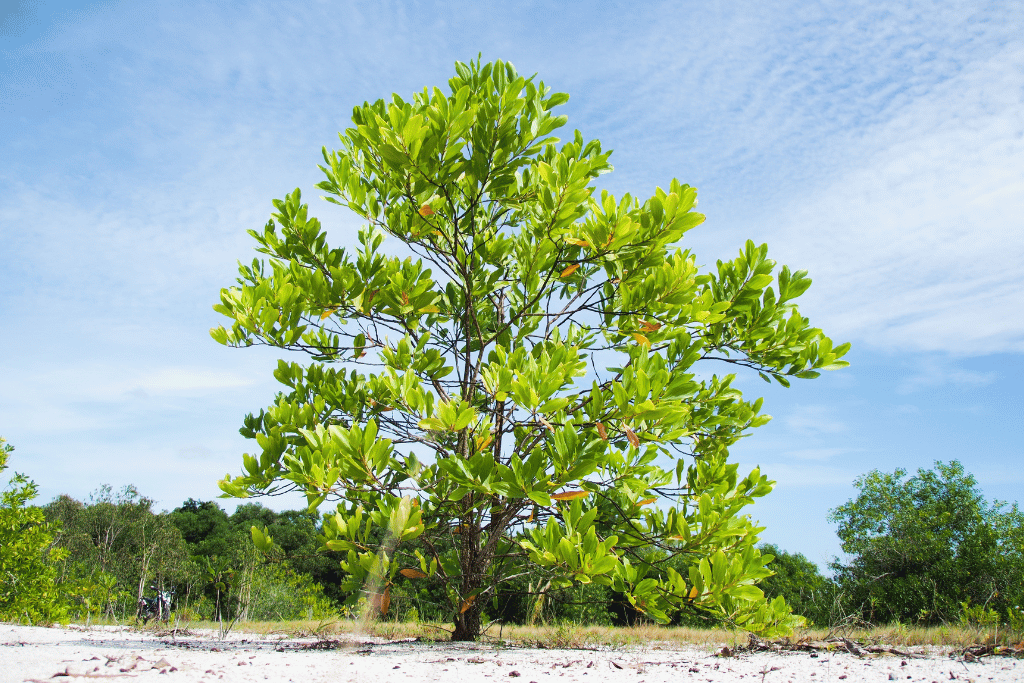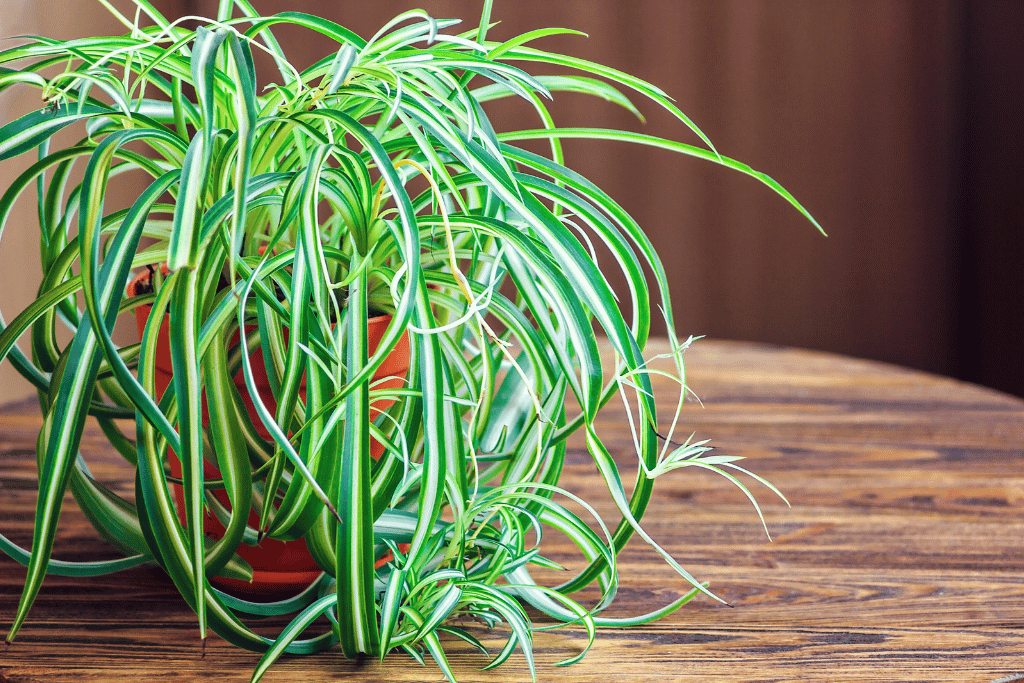
Spider plants have a delightful, not-so-spooky reputation. Unlike their eight-legged namesakes, these plants are charming and widely cherished for their unique appearance. Yet, there are times when these plants could use a little boost in their aesthetics. If you find yourself wondering how to make a spider plant bushier, you’ve come to the right place. In this article, I’ll take you through the steps to achieve a healthy, vibrant, and bushier spider plant.
Spider Plants Overview
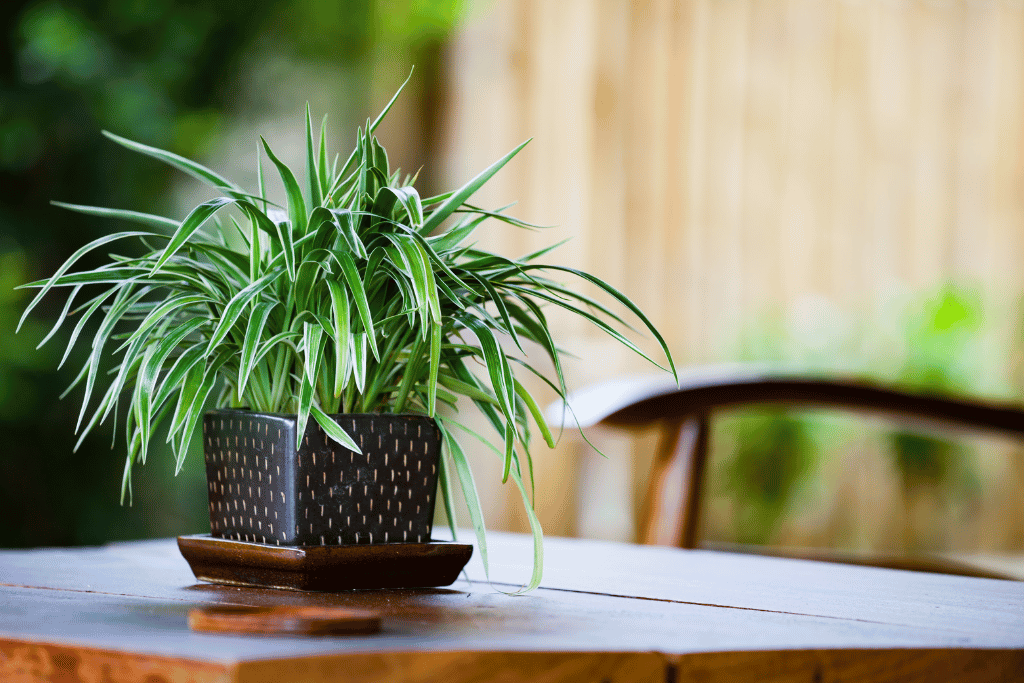
Spider plants (Chlorophytum comosum) are popular houseplants known for their arching, grass-like leaves adorned with delicate white flowers. Their unique appearance graces homes across the world, making them a beloved choice for both novice and experienced plant enthusiasts. However, there are instances when these plants may appear less than vigorous, leading to the question: how can I make a spider plant bushier? If you’ve ever pondered this question, you’re in for a treat, as I’ll be sharing invaluable insights on enhancing your spider plant’s bushiness and vitality.
What’s a Bushier Spider Plant?
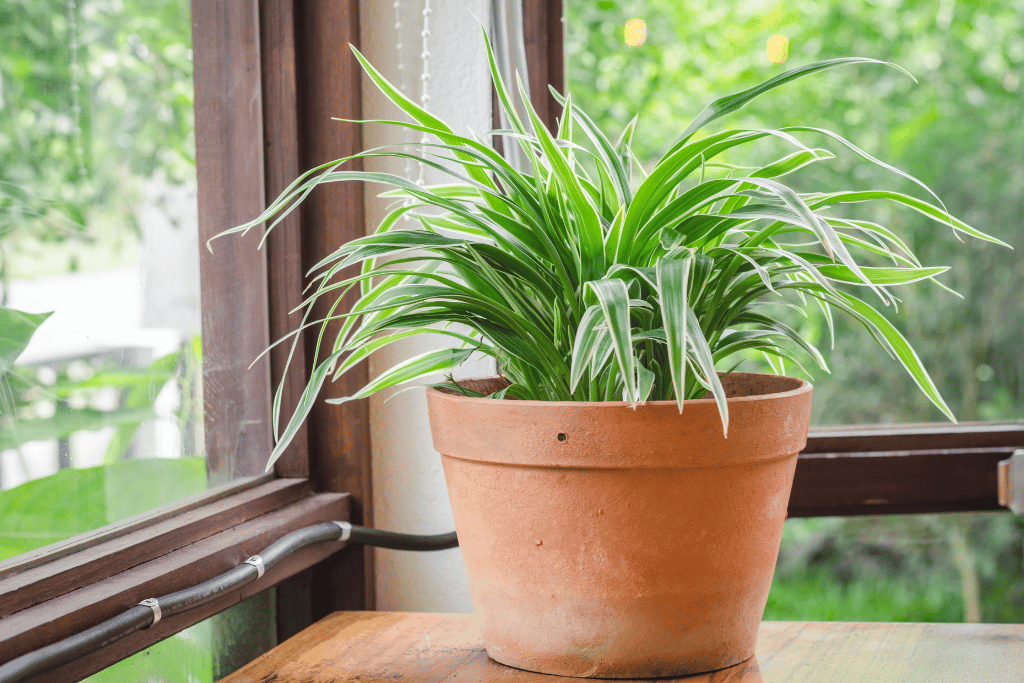
Before delving into the strategies to achieve a bushier spider plant, let’s clarify what “bushier” entails in this context. A bushier spider plant refers to a plant with a fuller and more abundant growth of foliage. It’s about creating a plant that’s visually appealing and vibrant, with leaves that are lush and well-distributed, rather than sparse or concentrated in certain areas.
Steps on How to Make a Spider Plant Bushier
Here are 10 steps to make a spider plant bushier:
1. Prune Your Spider Plant
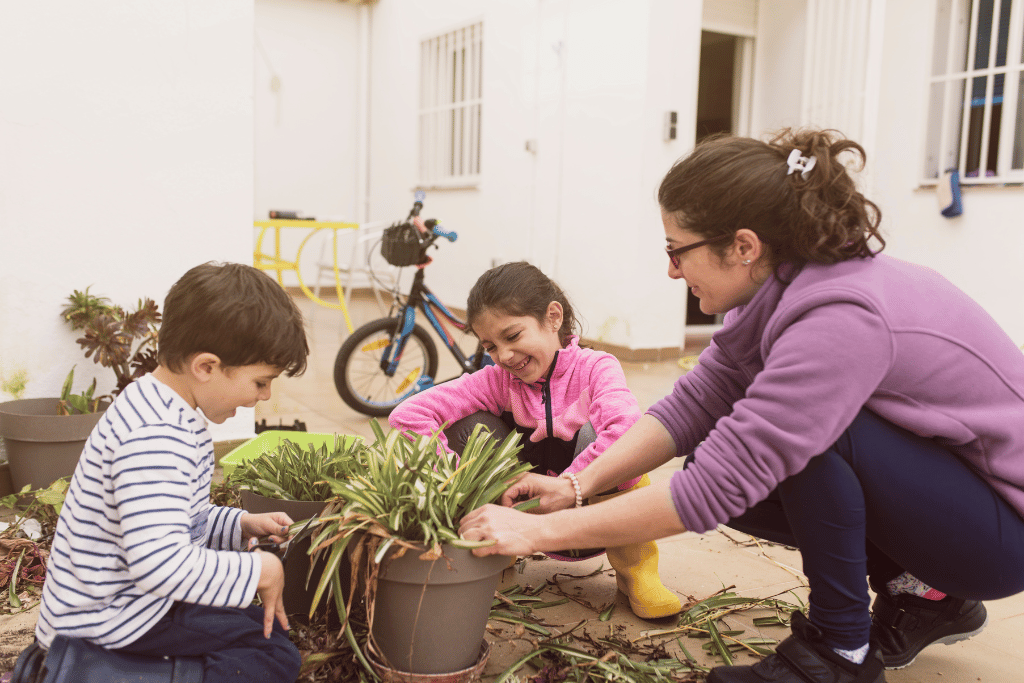
A Plant Haircut:
Pruning sounds fancy, but it’s like giving your plant a neat haircut. It helps your spider plant stay healthy and grow bushier. Just like we trim our hair to keep it looking good, your plant needs a little trim too.
Tools for the Job:
You don’t need special tools for pruning. A pair of scissors or garden shears will do just fine. Just make sure they are clean and sharp. Dull tools can hurt your plant.
Timing Matters:
Think about timing when you prune. Don’t do it in the cold months when your plant is resting. Spring and summer are the best times. This is when your plant is growing and needs a little touch-up.
Snip Away:
Look for leaves that don’t look healthy. If they’re brown or sickly, snip them off. If the tips of the leaves turn brown, that’s okay too. Snip off the brown part to make way for new, healthy growth. This also helps keep pesky bugs away.
2. Provide Adequate Light:
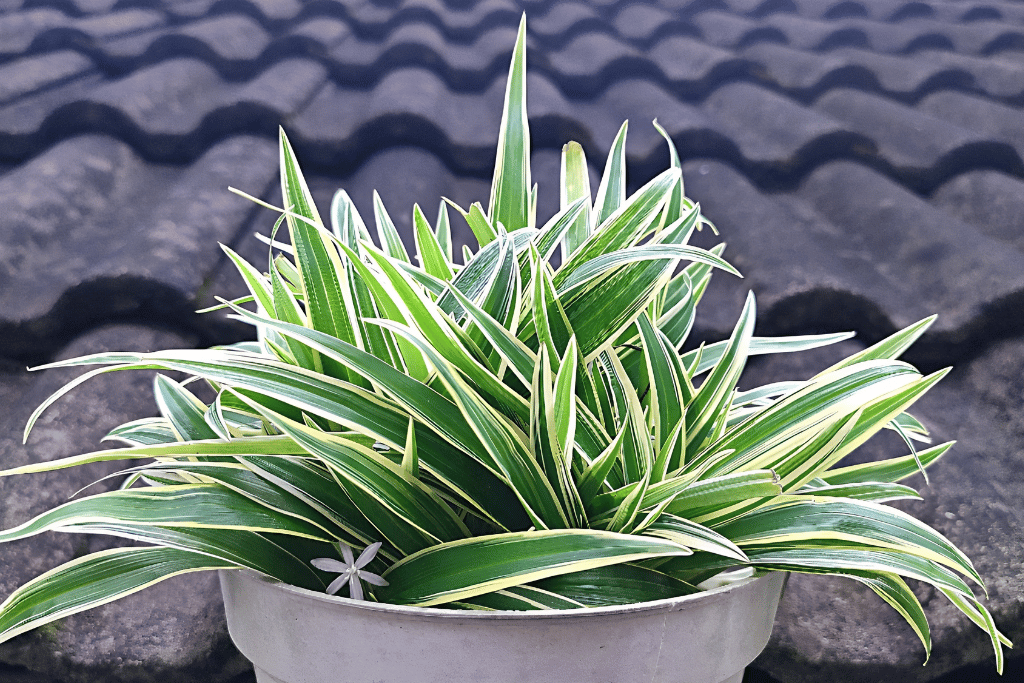
The Right Kind of Light:
Light is like food for your plant. Spider plants love light, but not too much. Think of it like a delicate balance. They’re used to growing under tall trees in South Africa, so they don’t want direct sunlight. It’s like giving them shade.
Bright But Not Too Bright:
Place your plant by a window that gets bright but indirect sunlight. This means the sun’s rays shouldn’t touch the plant directly. If they do, it’s like a sunburn for your plant. Bright light makes the stripes on its leaves stand out.
Adjusting Light:
Pay attention to your plant’s leaves. If they start to look pale, it’s a sign they need more light. On the other hand, too much sun can scorch the leaves. Finding the right spot with just the right amount of light is key for a bushier plant.
3. Water Wisely
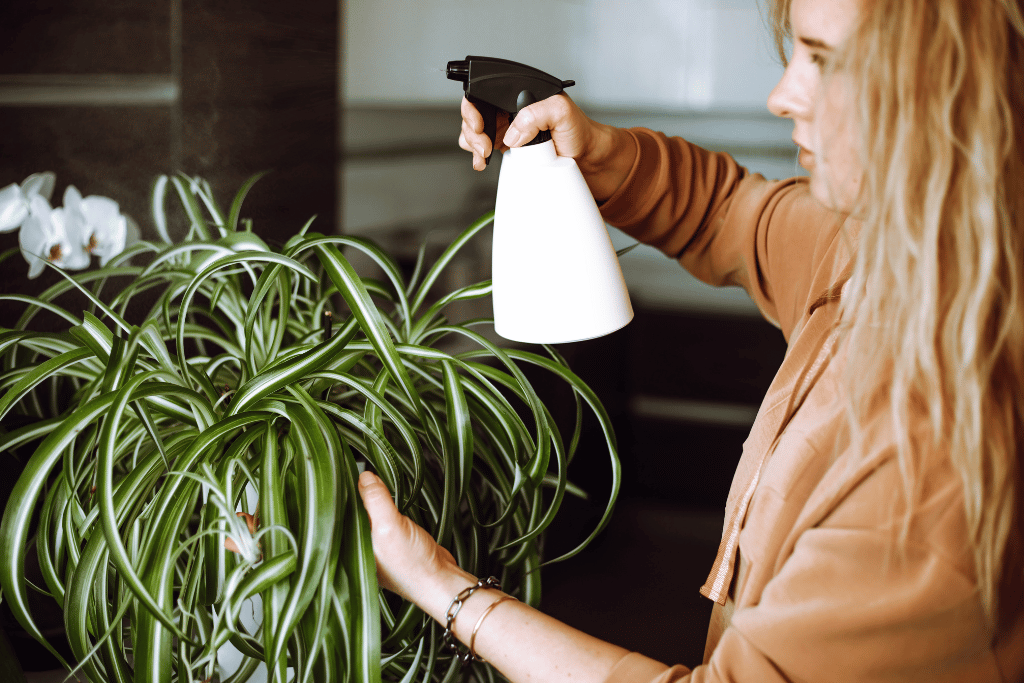
A Thirsty Plant:
Watering is like giving your plant a drink. Imagine your plant saying, “I’m thirsty!” when the soil is dry. Wait for the top two inches of soil to dry out before you water again.
Different Seasons, Different Needs:
Your plant’s water needs change with the seasons. In colder months, it needs less water. But when it’s hot in the summer, it needs a bit more. Think of it as adjusting your drink depending on the weather.
The Right Kind of Water:
Rainwater is like a treat for your plant. If you can, use rainwater to water your plant. If not, distilled water is a good choice. Tap water isn’t the best because it can have things that harm your plant.
Water at the Base:
When you water, pour the water onto the soil, not the leaves. Water on the leaves can make them rot. Keep a balance between too much water and too little. This helps your plant grow bushier and healthier.
4. Maintain Humidity
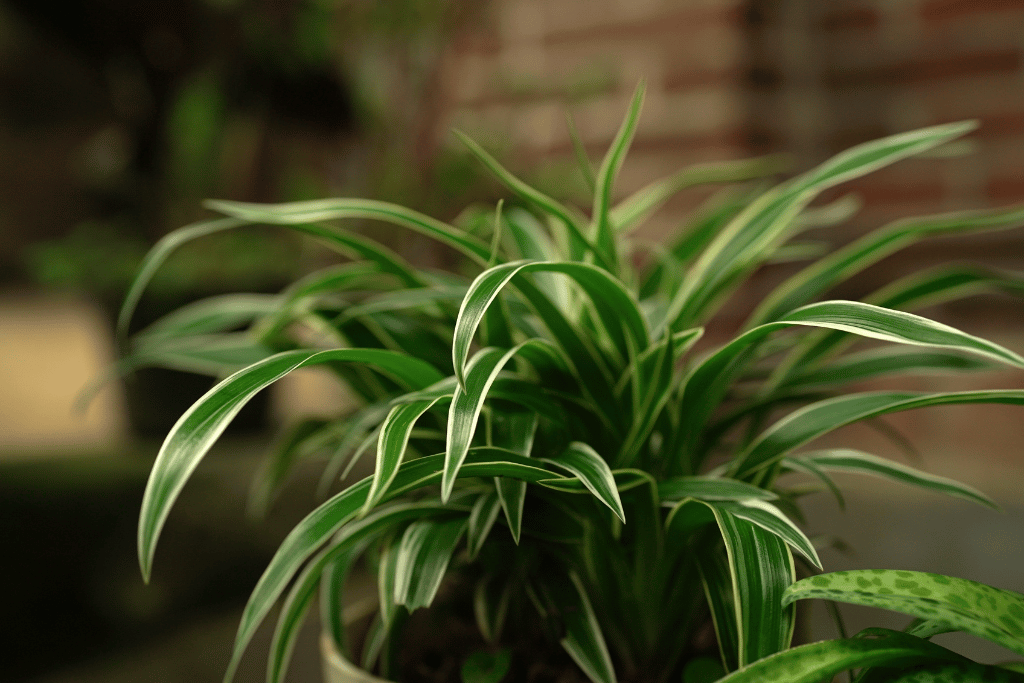
Humidity:
A Plant Spa Humidity is like a little spa treatment for your plant. Spider plants love a humid environment, just like they have in their natural home.
Boosting Humidity:
If your home is dry, your plant might not be too happy. Using a humidifier is like bringing the spa to your plant. But if you don’t have one, there are other tricks.
Trays and Groups:
Humidity trays are like little water pools for your plant. You can also group your plants together. It’s like having plant friends to share moisture with.
Avoid Drafts:
Your plant doesn’t like cold drafts. So, don’t put it near air conditioners or heaters. It’s like keeping your plant away from chilly winds.
Creating Humidity:
If your plant still isn’t bushy, you can get creative. Put a plant that loves humidity next to your spider plant. It’s like having a humidity buddy.
5. Propagate Spider Plants

Making More Plants
Propagation is like making plant babies. It’s a way to make more plants and make your original plant bushier.
Baby Plants, Big Impact
Look for baby spider plants, also called “plantlets.” These are like your plant’s babies. When they’re about an inch long, they’re ready to be moved.
Taking Steps
First, cut the baby plant away from the parent plant. Use clean scissors for this. Then, give it a little home in a small container with soilless potting mix.
Creating a Cozy Home
Fill the pot with soilless mix and make a little hole in the center. Gently place the baby plant in the hole and cover its roots with more mix. Press the mix down gently.
Watering the Newbie
After planting, water the baby plant. Be careful not to overwater. You want the soil to be moist but not soggy.
Waiting Game
Now comes the waiting part. Put the pot in a warm and bright spot, but not in direct sunlight. Your baby plant needs time to grow roots.
Roots Ready!
Check after a few weeks. If the baby plant has roots that are about three inches long, it’s ready to join the party.
Replanting Around the Parent
Take the baby plant out of its pot gently. Dig a little hole near the parent plant in its pot. Put the baby plant in the hole and cover its roots with soil. Press the soil down gently.
Growing Together
As the baby plant grows, it will make the parent plant look bushier. You’ll have a cluster of spider plants, all adding to the beauty of your space.
6. Repot Your Spider Plant

A New Home
Repotting is like giving your plant a new home. Spider plants grow fast, and they need more space to spread their roots.
Checking the Roots
When the roots start poking out of the pot, it’s time to repot. First, take your plant out of the old pot. Look at the roots. Healthy roots are white or light-colored. If they’re brown and mushy, it’s not a good sign. You might need to cut away the bad parts.
Planting in a Bigger Pot
Choose a bigger pot and put fresh soil in it. Put your plant in the new pot and cover its roots with soil.
Water and Drain
Water the plant well after repotting. Let the extra water drain out. Excess water can lead to problems.
More Room, More Growth
When your plant has more space, it can focus on growing leaves instead of being crowded. This helps it become bushier and healthier.
Spider Plant Care Guide

Taking care of your spider plant varieties is like taking care of friends. Here’s a simple guide to keep your plant happy and bushy:
Light: A Bright Spot
Spider plants love light, but not too much. Think of it like giving your plant a sunny spot without the scorching sun. Place your plant near a window where it gets bright but not direct sunlight. If the sun’s rays touch the leaves directly, it’s like a sunburn for your plant. Bright light makes the stripes on its leaves stand out.
Water: Drink Time
Imagine your plant saying, “I’m thirsty!” when the soil is dry. It’s like your plant’s way of asking for a drink. To keep your plant hydrated and happy, wait until the top two inches of soil have dried out before watering again. But remember, different seasons mean different watering needs. In colder months, your plant needs less water, while hot summer days make it thirstier. Just like adjusting your own drink depending on the weather.
Humidity: A Cozy Atmosphere
Creating the right humidity is like giving your plant a cozy atmosphere. Spider plants love a humid environment, like the rainforest air they’re used to. If your home isn’t naturally humid, don’t worry. You can use a humidifier to add moisture to the air.
Another trick is to place a tray with water near your plant. It’s like giving your plant a little water spa. You can also group your plants together – it’s like they’re having a little plant party. This helps increase humidity. Just remember, avoid putting your plant near air conditioners or heaters, as they don’t like extreme temperature changes.
Pruning: Neat and Trim
Pruning is like giving your plant a neat haircut. It’s not just about looks – it helps your plant grow healthier and bushier. Imagine trimming your hair to get rid of split ends. Similarly, trim away leaves that don’t look healthy. If they’re brown or sickly, snip them off. Don’t be afraid to snip off the tips of leaves if they turn brown – this encourages new growth. It also helps keep pesky bugs away from your plant.
Propagation: Plant Babies
Propagating your spider plant is like making plant babies. It’s a way to create more plants and make your original plant even bushier. You’ll notice little baby spider plants, also known as “plantlets,” growing near the parent plant. When they’re about an inch long, they’re ready to be moved to their own pots. Use clean scissors to cut the baby plant away from the parent plant. Then, give the baby plant a new home in a small pot with soilless mix.
Keep the soil moist, but not too wet. After a few weeks, you’ll see the baby plant growing roots that are about three inches long. Now it’s time to replant them around the parent plant. This adds more volume and makes your spider plant look even bushier.
Repotting: Room to Grow
Repotting is like giving your plant more room to spread its roots. Spider plants are fast growers, and they need space to thrive. When you see roots poking out of the pot, it’s a sign that it’s time to repot. First, gently take your plant out of its old pot. Check the roots – healthy roots are white or light-colored. If you see brown and mushy roots, trim them away. Choose a bigger pot and fill it with fresh soil. Place your plant in the new pot and cover its roots with soil. Water the plant well, but don’t let it sit in water. As your plant gets more space, it can focus on growing leaves instead of struggling for room.
Feeding: A Nutritious Meal
Feeding your plant is like giving it a nutritious meal. Even though spider plants are hardy, they still need extra nutrients to grow bushier and healthier. Feed your plant during the growing season, which is usually spring and summer. This is when your plant is most active. Organic fertilizers are gentle and release nutrients slowly. Chemical fertilizers work faster, but you need to be careful not to overfeed.
If you choose chemical fertilizer, dilute it to half strength. Feed your plant only twice a month during the growing season. Remember, no feeding in winter – it’s like giving your plant a break.
Growing Medium: The Right Soil
Choosing the right soil is like picking a comfy bed for your plant. Spider plants love soil that drains well, like soil with perlite or pumice mixed in. This helps water escape and keeps roots safe from rot. Good drainage is important – make sure the pot has holes at the bottom.
This way, extra water can flow out, and roots won’t sit in water. The pH of the soil should be between 6.0 and 6.5 – this is like giving your plant the right kind of food. Adding compost to the soil also helps your plant get more nutrients, making it grow healthier and bushier.
Temperature: The Right Climate
Temperature is like providing the right climate for your plant. Keep the daytime temperature between 65 and 75 degrees Fahrenheit. At night, a slightly cooler temperature of around 55 degrees Fahrenheit is ideal. Your plant doesn’t like extreme temperatures – below 50 degrees Fahrenheit or above 80 degrees Fahrenheit can harm it. If you’re keeping your plant outside, make sure it’s in USDA hardiness zones 9b to 11. When temperatures drop, bring your plant indoors to keep it comfortable and happy.
By following this simple care guide, you can ensure that your spider plant thrives and becomes bushier over time. Remember, plants, like friends, need a little attention and care to flourish and bring joy to your space.
Can You Save a Dying Spider Plant?

Seeing your spider plant struggling is like seeing a friend in need. But don’t worry, there are ways to help revive it and bring it back to its bushy and healthy self.
Assess the Situation:
First, take a close look at your plant. Is it getting enough light? Is it thirsty or drowning in too much water? Is the air too dry? Identifying the problem is like finding the right medicine for your plant.
Trimming:
If you spot any leaves that are turning brown or yellow, it’s a sign of trouble. Just like we feel better after a haircut, your plant will benefit from a little trim. Use clean scissors to snip away the sickly leaves. This will encourage new growth and make your plant look neater.
Watering Adjustment:
Are you watering too much or too little? Check the soil – if it’s bone dry, your plant needs a drink. If it’s soggy, you’re overdoing it. Find the balance, like giving your plant the right amount of water to quench its thirst.
Repotting:
If your plant looks cramped in its pot, it’s like giving your friend a bigger room to breathe. Gently remove your plant from its pot and inspect the roots. Healthy roots are light-colored, while mushy roots mean trouble. If it’s root rot, trim the bad parts and plant it in fresh soil in a bigger pot. This gives your plant room to grow and thrive.
Humidity Boost:
If your plant’s leaves are crispy or dry, it’s like your plant is begging for a humid environment. Place a tray of water near the plant or group it with other plants. This creates a cozy atmosphere, just like a humid day in the rainforest.
Pest and Disease Management:
If you see tiny critters or strange spots on your plant, it’s time to take action. Isolate the plant from others to prevent the problem from spreading. Like a doctor, identify the pest or disease and treat it with the right remedy. This helps your plant recover and regain its strength.
Optimal Light:
If your plant looks pale and droopy, it’s like missing out on the sun. Find a spot with bright but indirect sunlight, like giving your plant a warm hug. Move it away from harsh direct sunlight, which can be like a sunburn for your plant.
Propagation:
If your plant is struggling despite your efforts, propagating it is like giving it a fresh start. Follow the steps you learned earlier to create baby plants. These new plants can carry on the legacy of your original plant, making it feel like a proud parent.
Patience and Care:
Just like nursing a friend back to health, your plant needs time and care. Keep an eye on it, adjust your care routine, and have patience. It’s like giving your plant a supportive shoulder to lean on.
Final Words
So, that’s all I had to convey on how to make a spider plant bushier. Hope you liked all the information.
Remember that transforming your spider plant into a bushier beauty involves a combination of mindful care practices. And by following the steps mentioned above and tailoring your care routine to your plant’s needs, you’ll soon witness your spider plant thriving and becoming the bushy beauty you desire. Just like tending to a close friend, each step in the process requires attention, patience, and a bit of nurturing.
FAQS – How to Make a Spider Plant Bushier
Why is my spider plant not bushy?
Spider plants may become leggy due to inadequate light or improper care. Insufficient light can lead to elongated stems and sparse growth.
What should I do if my spider plant is root-bound?
If the roots are tightly packed in the pot, it’s time to repot the spider plant into a slightly larger container. This provides more space for root growth and can lead to increased bushiness.
Should I rotate my spider plant to ensure even bushiness?
Yes, rotating your spider plant every few weeks helps ensure that all sides receive adequate light and encourage balanced, uniform growth.
Are there any signs that my spider plant is getting too much light?
Yes, if the leaves start to turn brown or have sunburned patches, it might be receiving too much direct light. Move it to a slightly shadier spot to prevent damage.
Can I use a growth hormone to make my spider plant bushier?
While growth hormones can stimulate root and shoot development, they are not usually necessary for spider plants. Providing the right conditions and care is usually sufficient for bushy growth.
How can I encourage the development of more offsets on my spider plant?
Ensure the plant is well-fed and receives proper light. As the spider plant matures, it will naturally produce more offsets, contributing to a fuller appearance.
Can I use a trellis or support system to make my spider plant bushier?
Spider plants are not climbers, so using a trellis is not necessary. Instead, focus on the care tips mentioned earlier to encourage natural bushy growth.
Is it possible to over-prune a spider plant while trying to make it bushier?
Excessive pruning can stress the plant and slow down growth. Prune judiciously, removing only yellow or brown leaves and overly long stems to maintain a healthy balance.
Will misting the Spider plant with water promote bushier growth in dry environments?
Misting can temporarily increase humidity around the plant but won’t significantly impact overall bushiness. It’s better to address humidity through proper watering and placement.
How long should I wait to see results after implementing these Spider bushiness-enhancing practices?
Visible results may take several weeks to a few months, as new growth gradually emerges. Be patient and consistent with your care routine for the best outcomes.
Can different types of Spider Plants be grown together?
Yes, you can grow different types of spider plants together. However, keep in mind that if they flower and produce seeds, natural crossbreeding is possible, leading to new and unexpected variations.



